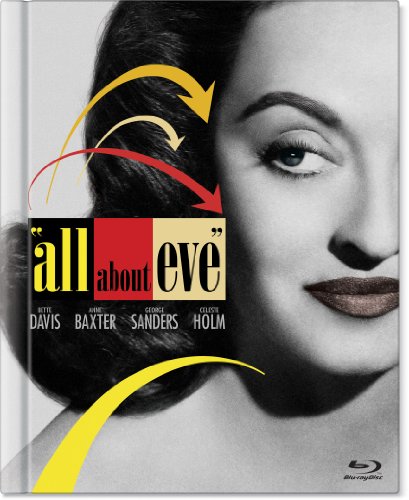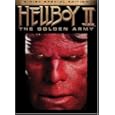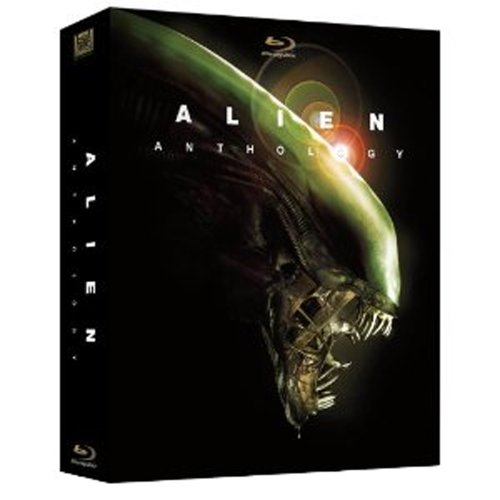feature films utilizing the highest possible picture and audio presentation.
Episode I, The Phantom Menace "I have a bad feeling about this," says the young Obi-Wan Kenobi (played by Ewan McGregor) in Star Wars: Episode I, The Phantom Menace as he steps off a spaceship and into the most anticipated cinematic event... well, ever. He might as well be speaking for the legions of fans of the original episodes in the Star Wars saga who can't help but secretly ask themselves: Sure, this is Star Wars, but is it my Star Wars? The original elevated moviegoers' expectations so high that it would have been impossible for any subsequent film to meet them. And as with all the Star Wars movies, The Phantom Menace features inexplicable plot twists, a fistful of loose threads, and some cheek-chewing dialogue. Han Solo's swagger is sorely missed, as is the pervading menace of heavy-breather Darth Vader. There is still way too much quasi-mystical mumbo jumbo, and some of what was fresh about Star Wars 22 years earlier feels formulaic. Yet there's much to admire. The special effects are stupendous; three worlds are populated with a mélange of creatures, flora, and horizons rendered in absolute detail. The action and battle scenes are breathtaking in their complexity. And one particular sequence of the film--the adrenaline-infused pod race through the Tatooine desert--makes the chariot race in Ben-Hur look like a Sunday stroll through the park.
Among the host of new characters, there are a few familiar walk-ons. We witness the first meeting between R2-D2 and C-3PO, Jabba the Hutt looks younger and slimmer (but not young and slim), and Yoda is as crabby as ever. Natalie Portman's stately Queen Amidala sports hairdos that make Princess Leia look dowdy and wields a mean laser. We never bond with Jedi Knight Qui-Gon Jinn (Liam Neeson), and Obi-Wan's day is yet to come. Jar Jar Binks, a cross between a Muppet, a frog, and a hippie, provides many of the movie's lighter moments, while Sith Lord Darth Maul is a formidable force. Baby-faced Anakin Skywalker (Jake Lloyd) looks too young and innocent to command the powers of the Force or wield a lightsaber (much less transmute into the future Darth Vader), but his boyish exuberance wins over skeptics.
Near the end of the movie, Palpatine, the new leader of the Republic, may be speaking for fans eagerly awaiting Episode II when he pats young Anakin on the head and says, "We will watch your career with great interest." Indeed! --Tod Nelson
Episode II, Attack of the Clones If The Phantom Menace was the setup, then Attack of the Clones is the plot-progressing payoff, and devoted Star Wars fans are sure to be enthralled. Ten years after Episode I, Padmé Amidala (Natalie Portman), now a senator, resists the creation of a Republic Army to combat an evil separatist movement. The brooding Anakin Skywalker (Hayden Christensen) is resentful of his stern Jedi mentor, Obi-Wan Kenobi (Ewan McGregor), tormented by personal loss, and showing his emerging "dark side" while protecting his new love, Amidala, from would-be assassins. Youthful romance and solemn portent foreshadow the events of the original Star Wars as Count Dooku (a.k.a. Darth Tyranus, played by Christopher Lee) forges an alliance with the Dark Lord of the Sith, while lavish set pieces showcase George Lucas's supreme command of all-digital filmmaking. All of this makes Episode II a technological milestone, savaged by some critics as a bloated, storyless spectacle, but still qualifying as a fan-approved precursor to the pivotal events of Episode III. --Jeff Shannon
Episode III, Revenge of the Sith Ending the most popular film epic in history, Star Wars: Episode III, Revenge of the Sith is an exciting, uneven, but ultimately satisfying journey. Picking up the action from Episode II, Attack of the Clones as well as the animated Clone Wars series, Jedi Master Obi-Wan Kenobi (Ewan McGregor) and his apprentice, Anakin Skywalker (Hayden Christensen), pursue General Grievous into space after the droid kidnapped Supreme Chancellor Palpatine (Ian McDiarmid).
It's just the latest maneuver in the ongoing Clone Wars between the Republic and the Separatist forces led by former Jedi turned Sith Lord Count Dooku (Christopher Lee). On another front, Master Yoda (voiced by Frank Oz) leads the Republic's clone troops against a droid attack on the Wookiee homeworld of Kashyyyk. All this is in the first half of Episode III, which feels a lot like Episodes I and II. That means spectacular scenery, dazzling dogfights in space, a new fearsome villain (the CGI-created Grievous can't match up to either Darth Maul or the original Darth Vader, though), lightsaber duels, groan-worthy romantic dialogue, goofy humor (but at least it's left to the droids instead of Jar-Jar Binks), and hordes of faceless clone troopers fighting hordes of faceless battle droids.
But then it all changes.
After setting up characters and situations for the first two and a half movies, Episode III finally comes to life. The Sith Lord in hiding unleashes his long-simmering plot to take over the Republic, and an integral part of that plan is to turn Anakin away from the Jedi and toward the Dark Side of the Force. Unless you've been living under a rock the last 10 years, you know that Anakin will transform into the dreaded Darth Vader and face an ultimate showdown with his mentor, but that doesn't matter. In fact, a great part of the fun is knowing where things will wind up but finding out how they'll get there. The end of this prequel trilogy also should inspire fans to want to see the original movies again, but this time not out of frustration at the new ones. Rather, because Episode III is a beginning as well as an end, it will trigger fond memories as it ties up threads to the originals in tidy little ways. But best of all, it seems like for the first time we actually care about what happens and who it happens to.
Episode III is easily the best of the new trilogy--OK, so that's not saying much, but it might even jockey for third place among the six Star Wars films. It's also the first one to be rated PG-13 for the intense battles and darker plot. It was probably impossible to live up to the decades' worth of pent-up hype George Lucas faced for the Star Wars prequel trilogy (and he tried to lower it with the first two movies), but Episode III makes us once again glad to be "a long time ago, in a galaxy far, far away." --David Horiuchi
Star Wars: The Original Trilogy (Episodes IV - VI) The Star Wars trilogy had the rare distinction of becoming more than just a series of movies, but a cultural phenomenon, a life-defining event for its generation. On its surface, George Lucas's original 1977 film is a rollicking and humorous space fantasy that owes debts to more influences than one can count on two hands, but filmgoers became entranced by its basic struggle of good vs. evil "a long time ago, in a galaxy far, far away," its dazzling special effects, and a mythology of Jedi Knights, the Force, and droids.
In the first film, Luke Skywalker (Mark Hamill) gets to live out every boy's dream: ditch the farm and rescue a princess (Carrie Fisher). Accompanied by the roguish Han Solo (Harrison Ford, the only principal who was able to cross over into stardom) and trained by Jedi master Obi-Wan Kenobi (Alec Guinness), Luke finds himself involved in a galactic war against the Empire and the menacing Darth Vader (David Prowse, voiced by James Earl Jones). The following film, The Empire Strikes Back (1980), takes a darker turn as the tiny rebellion faces an overwhelming onslaught. Directed by Irvin Kershner instead of Lucas, Empire is on the short list of Best Sequels Ever, marked by fantastic settings (the ice planet, the cloud city), the teachings of Yoda, a dash of grown-up romance, and a now-classic "revelation" ending. The final film of the trilogy, Return of the Jedi (1983, directed by Richard Marquand), is the most uneven. While the visual effects had taken quantum leaps over the years, resulting in thrilling speeder chases and space dogfights, the story is an uneasy mix of serious themes (Luke's maturation as a Jedi, the end of the Empire-rebellion showdown) and the cuddly teddy bears known as the Ewoks.
Years later, George Lucas transformed his films into "special editions" by adding new scenes and special effects, which were greeted mostly by shrugs from fans. They were perfectly happy with the films they had grown up with (who cares if Greedo shot first?), and thus disappointed by Lucas's decision to make the special editions the only versions available. --David Horiuchi





















































